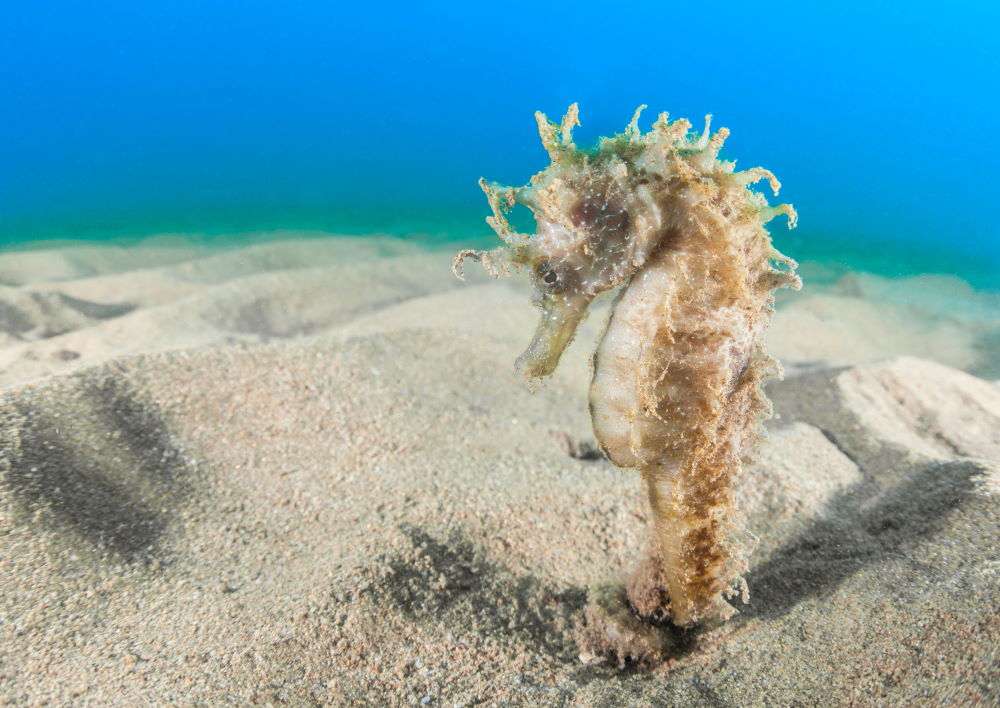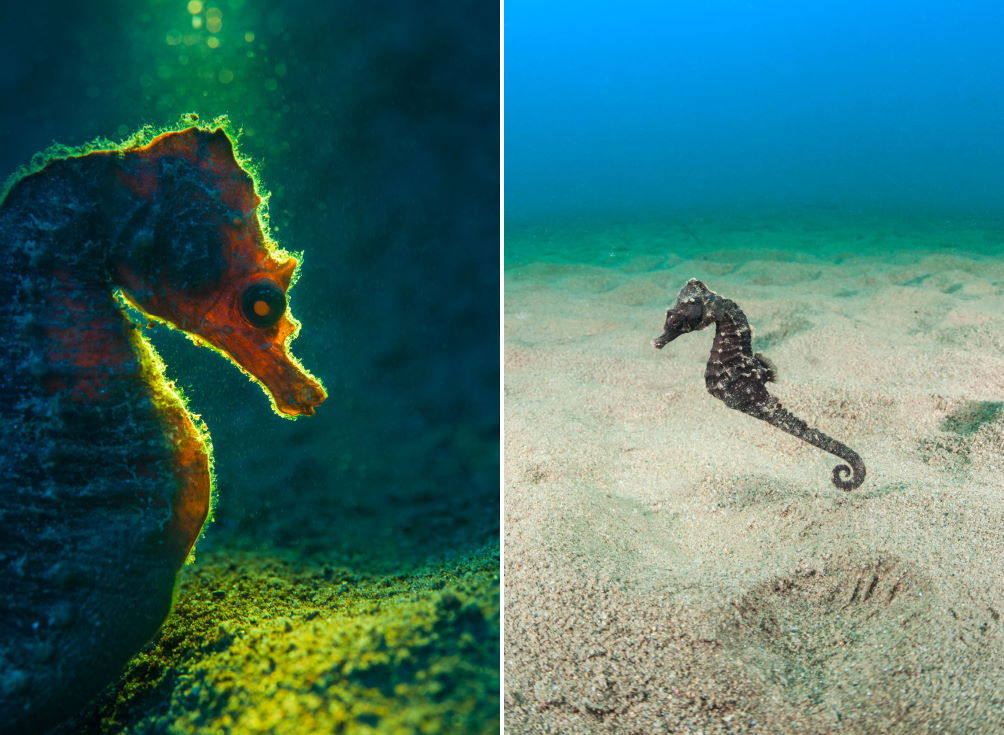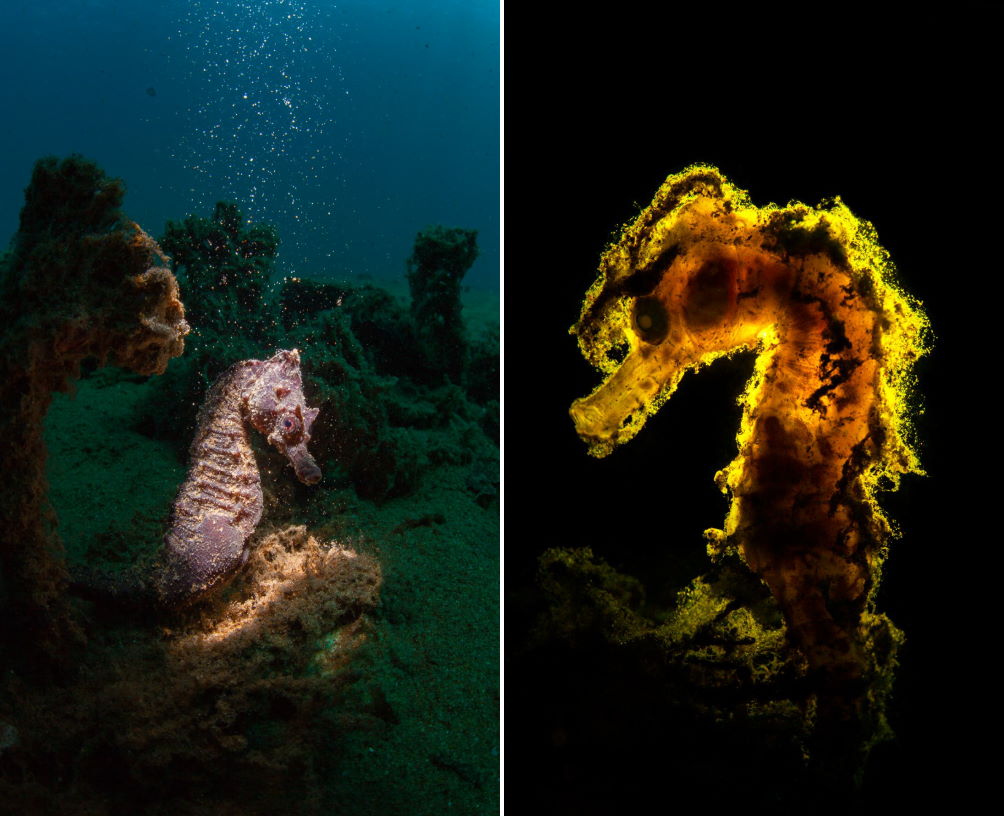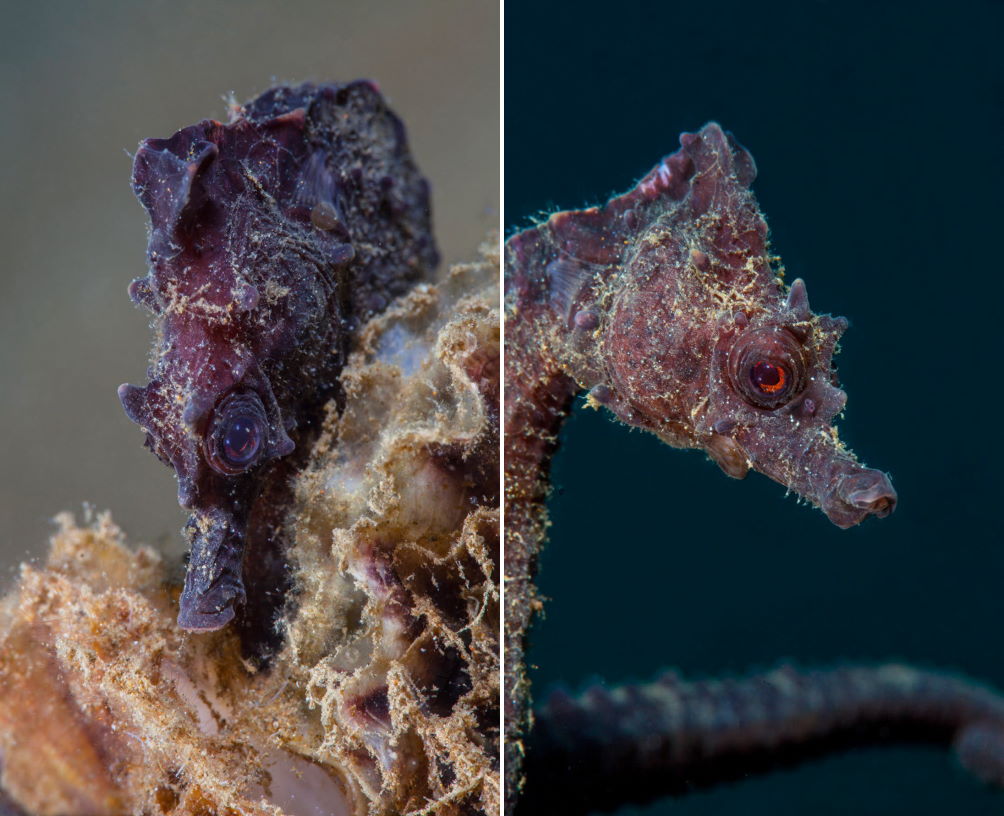
For many years, Stratoni a small gulf in Northern Aegean Sea, along with many other small and bigger gulfs that compose the beautiful coastline of east Thessaloniki Region was a place with rich marine life, big numbers of different fish species in a sandy sea bottom covered sea grass, sponges, anemones and small gorgonians.
The singularity of Stratoni compared to other nearby gulfs and coasts is the big number of seahorses that inhabit the sea bottom.
For the locals, fishermen this was not something special. Seahorses were a common by-catch and if they were still alive in the net they were thrown back to the sea. If dead, they became dried souvenirs and decorations
to local taverns.

About three decades ago, big number of fishing boats mostly trawlers destroyed the sea bottom with their fishing gear. They ripped off big parts of sea flora, the sea grass with nests and eggs and small fishes. Soon, there were no fishes left to fish and the fishing boats moved to other places.
While the area was struggling to survive this disaster, a tremendous flood in 2010 swept away huge amounts of soil and sediment into the sea and covered what was left of the sea flora.
As scuba diving became more popular, this place was declared among divers “the seahorse kingdom” and the “secret” started to spread over the surface, with details about the exact point to enter water and accurate depth to encounter the little critters.
With the info from a friend, I had photographed seahorses before the flooding and a set of seahorse portraits were included to my first underwater photograph exhibition back in 2008.

Since the old gold mines reopened the mining galleries under new ownership – about a decade ago – and because of many articles and aerial photographs presenting a complete destruction of the area from forest to coast and severe sea pollution, scuba divers eventually lost their interest of diving in Stratoni.
Recently a team of marine biologists rediscovered the place and started to examine closely the environment trying to figure not only the quality of water but to reach some conclusions about how after the overfishing tactics and the environmental destruction seahorses managed to survive through the years and why they prefer this specific area as their habitat.
The scientists established a complex set of plastic grid with ropes and some fake sea flora as a draft reef to record the reaction of seahorses that immediately inhabited the construction.
The biologists filmed some scenes and published their research about the unique Hippocampus colony not only in Aegean Sea but the only one discovered in Mediterranean Sea.

Happy with the news of their existence and curious about the place I had to dive so many years I planed three days of diving at the end of August to photograph my favorite animal again.
On my first day of diving I was really disappointed with the visibility but I was thrilled with my discoveries as I encountered more than ten seahorses of both the two species living there, Hippocampus ramulosus (Yellow) & Hippocampus hippocampus (Brown).
On diving days two and three water was crystal clear.
Temperature and great visibility helped me use different techniques and play with macro and wide angle lens, try snooting and use of coloured torches to create special effects.

As diver and mostly as photographer I was more than satisfied with the result.
At some point I found the remains of the plastic cluster reef destroyed by a fish boat and left on sea bottom, looking more like garbage than a reef.
After nine hours underwater split on six dives I had in my memory cards a complete portfolio of seahorses.
Full of thoughts and images, I spent some time before my departure on the empty beach trying to figure out the situation.
Τhis crowded place of the past was abandoned by ttourists, swimmers and fishermen and the sea bottom from a distance seem “empty”.

However this fragile, shy and harmless, critter refuses to leave and managed to survive through the years.
Maybe seahorses are tougher than we think.
Maybe this behavior we translate as patience in our presence is something more like stubbornness.
Maybe our absence from the coast helped this place to recover slowly and nature found.
WORDS and PICTURES by Nicholas Samaras

















